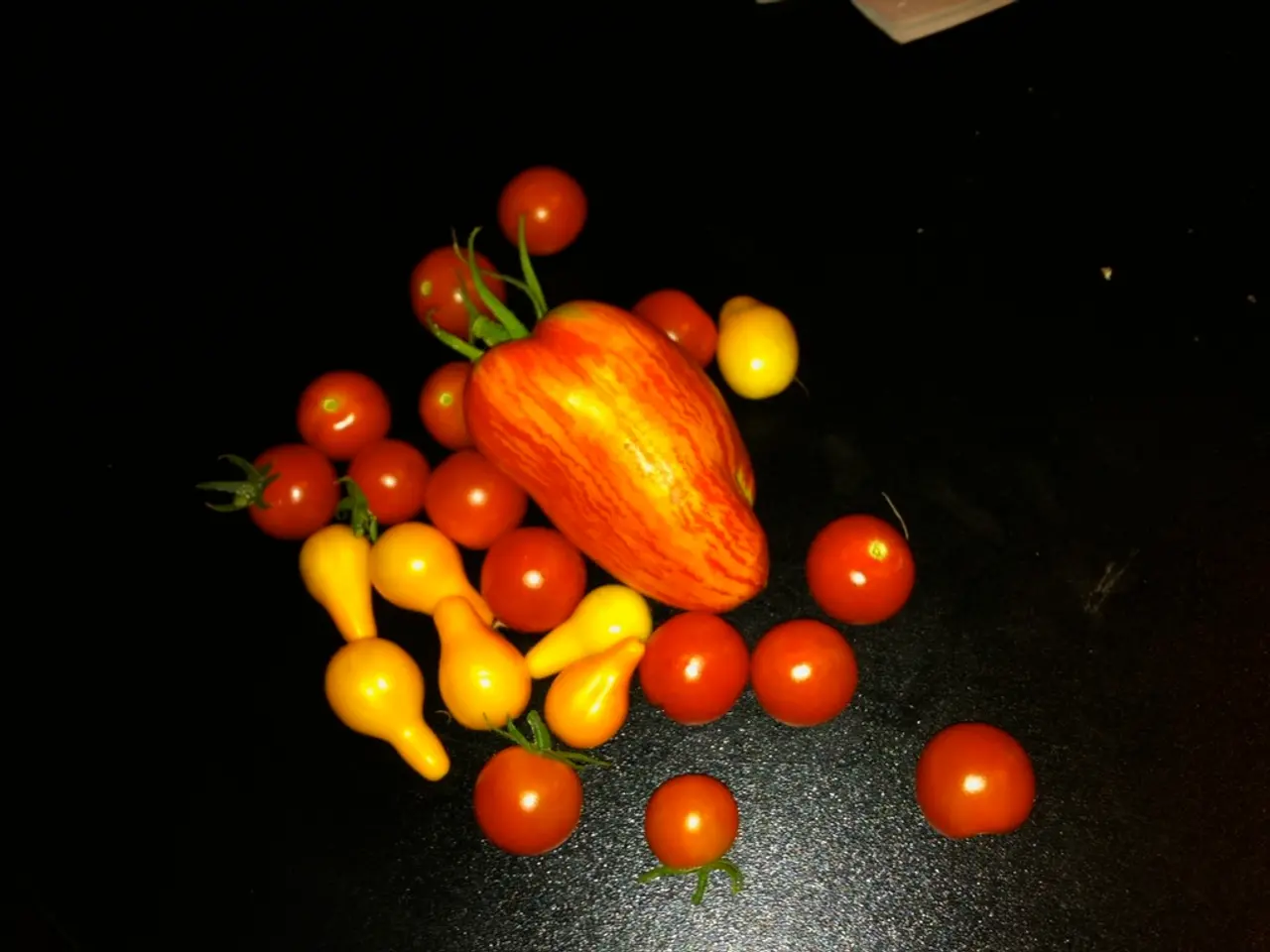Protecting the Environment through Sustainable Fruit Harvesting Methods: 10 Essential Guidelines
In a bid to promote ecological balance and efficient resource use, the practice of sustainable fruit picking is gaining traction. By adopting a series of key strategies, farmers and pickers can reduce environmental impacts while maintaining high-quality produce.
One of the fundamental principles of sustainable fruit picking is careful soil management and balanced fertilization. Soil testing is crucial to apply the right amounts of nutrients, reducing chemical runoff and preventing soil degradation. Organic inputs like compost or well-rotted manure are used to enhance soil fertility and microbial life.
Another essential practice is the use of mulching to conserve soil moisture and improve soil health. Organic mulches such as straw or wood chips retain moisture, reduce weed growth, and stabilize soil temperature. Mulching also adds organic matter as it decomposes, improving soil structure and reducing irrigation needs.
To further conserve water, drip irrigation and water-saving technologies are adopted. These methods deliver water directly to the root zone, minimising wastage, reducing water use by up to 30%, and preventing waterlogging or drought stress. The use of moisture sensors and automated irrigation scheduling also ensures precision watering.
Integrating agroforestry or silvopastoral systems is another strategy that promotes biodiversity, improves carbon sequestration, and enhances microclimates. This approach supports sustainable ecosystems and reduces pressure on natural forests.
Building resilient, organic, and zero-waste farm systems is another crucial aspect of sustainable fruit picking. Practices such as vermiculture, composting, and using by-products for soil regeneration enhance nutrient cycling and reduce reliance on chemical fertilizers. Creating closed-loop systems supports biodiversity and sustainable yields.
Providing training and policy support for sustainable harvesting is vital for the long-term sustainability and scaling of best practices. Education on pesticide and fertilizer reduction, water conservation, post-harvest handling, and eco-friendly packaging contributes to the adoption of sustainable techniques.
Aligning harvesting activities with natural temperature cycles minimises waste, while implementing Integrated Pest Management (IPM) helps maintain the balance of beneficial organisms and reduces the risk of resistance to pesticides. Providing thorough training to fruit pickers also encourages the adoption of sustainable techniques.
Using reusable or biodegradable containers for collecting fruits reduces environmental impact by minimising waste and pollution, and conserving resources. Maintaining biodiversity in fruit picking areas involves leaving enough fruit and plant material intact to support wildlife and preserve natural habitats.
Taking care of the environment during fruit picking doesn't have to be complicated. It's about being thoughtful and respectful of nature. Focusing on locally grown, seasonal fruits reduces environmental costs associated with transportation, refrigeration, and storage.
Minimising damage to plants during harvesting by using gentle techniques and appropriate tools helps preserve the plant's structural integrity, growth, and longevity. Practicing crop rotation and intercropping helps maintain soil health, reduces the buildup of pests and diseases, and promotes a more balanced ecosystem within the farm.
Organic methods during fruit picking rely on natural alternatives like compost, beneficial insects, and plant-based treatments, promoting soil vitality, biodiversity, and a healthier environment. The top 10 fruits that are the easiest to pick for beginners include apples, berries, cherries, grapes, lemons, peaches, pears, plums, strawberries, and tomatoes.
These practices reduce environmental impacts by conserving water and soil, promoting biodiversity, minimising chemical inputs, and enhancing ecosystem resilience—forming the core of sustainable fruit picking and farming for environmental conservation. These strategies are supported by research and innovation in sustainable agriculture and have proven effective in diverse contexts.
In the pursuit of promoting sustainable living, home-and-garden practices, and ecological balance, transitioning to sustainable fruit picking is essential. By embracing methods such as careful soil management, mulching, water conservation through drip irrigation, agroforestry, and zero-waste farm systems, one can significantly reduce environmental impacts while maintaining high-quality produce, contributing to a lifestyle that supports both the environment and high-quality produce.




